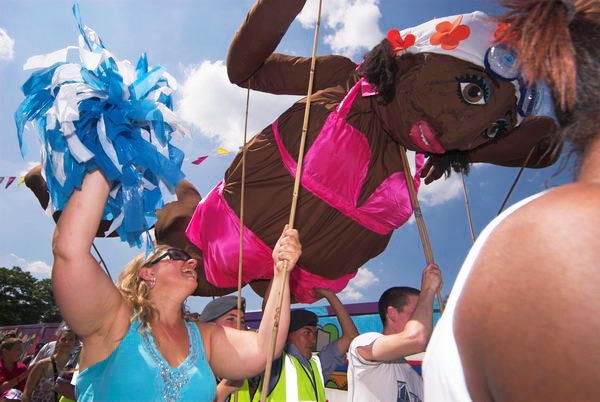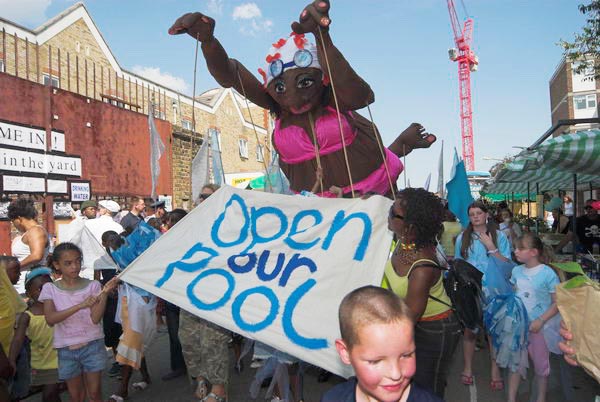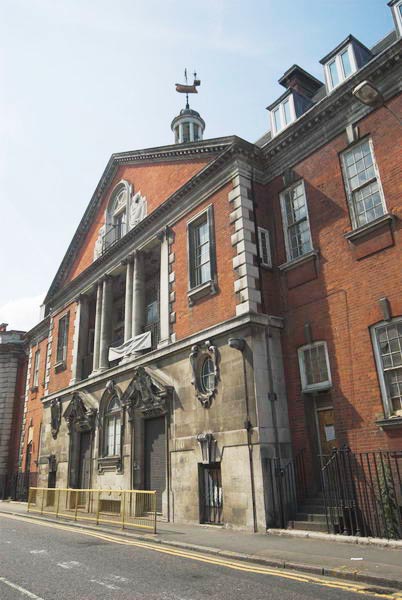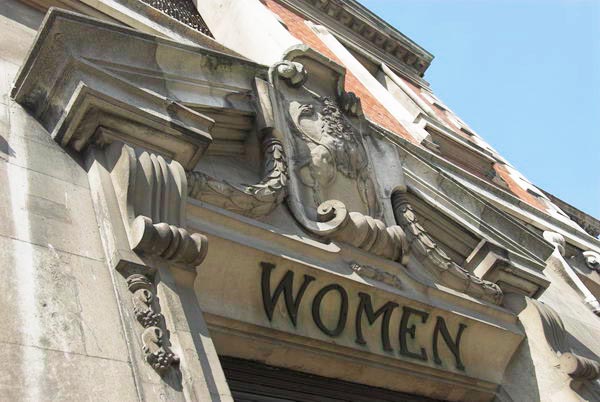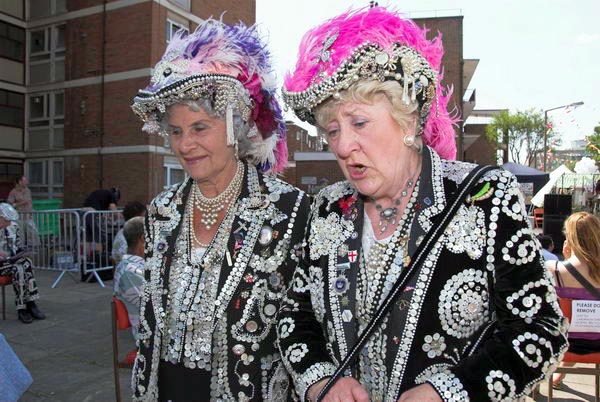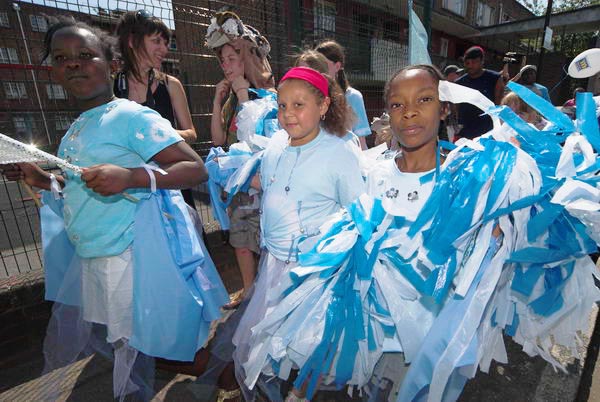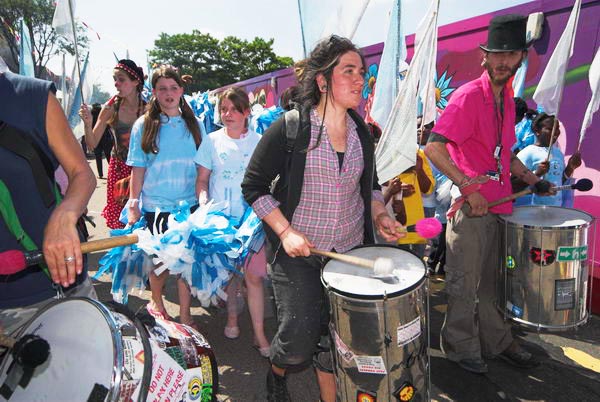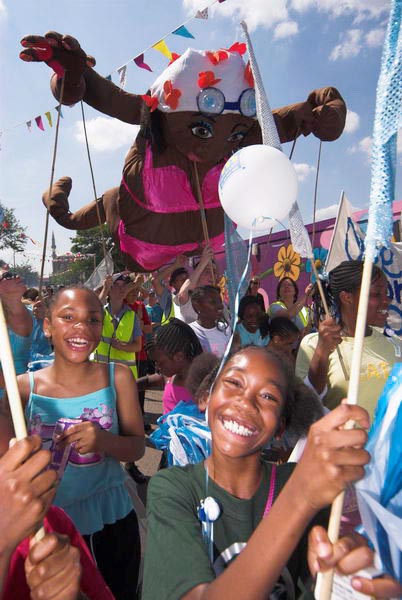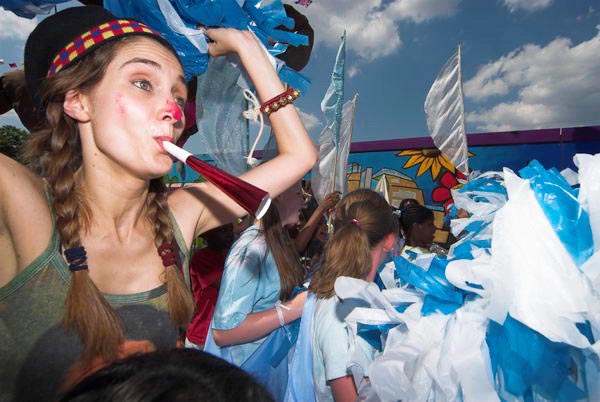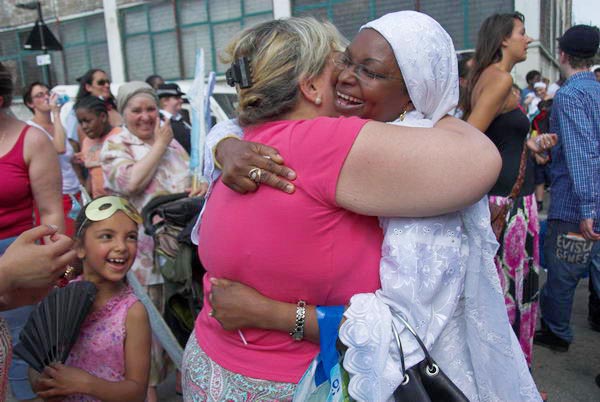Streatham, Spain and Guantanamo: Three events in London on Saturday 15th July 2006, a festival, a commemoration and a protest.
Streatham Festival Children’s Parade – Streatham
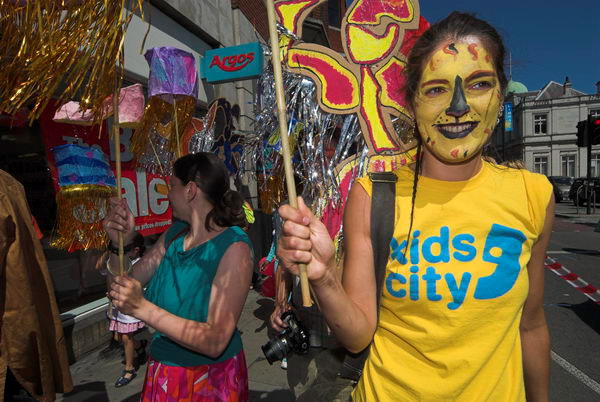
Streatham Festival held it’s first ever Children’s Parade, children working with artists from Arts Community Exchange and Kids’ City to create sculptures, banners and puppets for all to see.
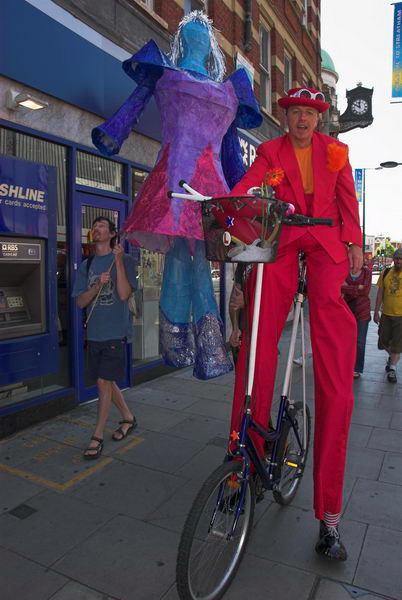
The parade was led by drummers Ancestral Hands and a cycling stilt-walker brought up the rear as it went along Streatham High Road to St Leonard’s Church.
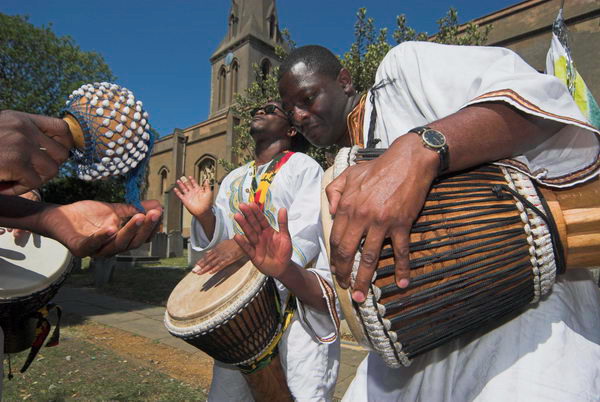
One of my pictures from this parade was used in the remarkable The Streatham Sketchbook by Jiro Osuga and Mireille Galinou with photography by Torla Evans which was published in 2017 by Your London Publishing. Still available, this was described by Graham Gower of The Streatham Society as “superb and one the best books to be published on Streatham as a place – if not the best.”
International Brigade Commemoration – Jubilee Gardens, Waterloo
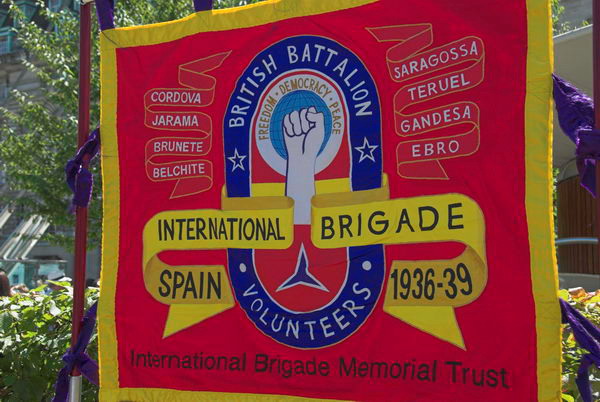
I’ve attended and photographed a number of the annual commemorations of those who went to fight the fascists in Spain in 1936-9, but this 2006 event was the most memorable. Here’s what I wrote about it in 2006.

Several hundred people attended the annual commemoration at the International Brigade Memorial in Jubilee Gardens London Organised by the International Brigade Memorial Trust on Saturday 15 July.
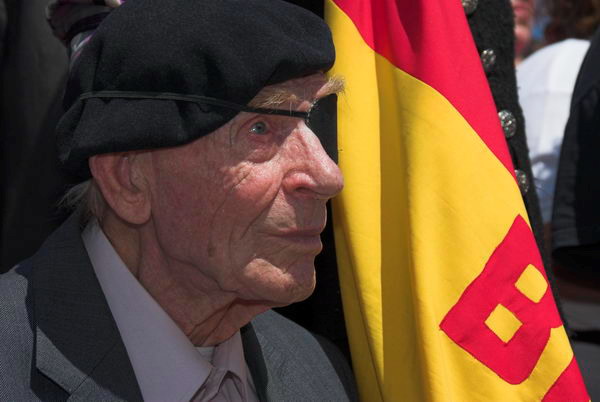
Between 1936 and 1939 over 35,000 men and women, from more than 50 countries, volunteered for the Republican forces. Of the 2,300 who came from Britain, Ireland and the Commonwealth, over 500 were killed.
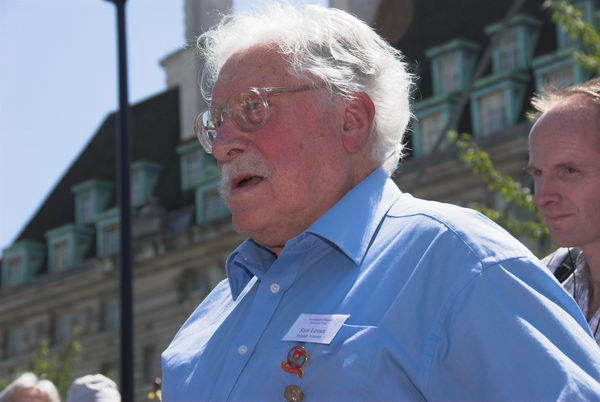
Volunteers came largely from working class areas across the country. most were members of communist organisations or otherwise active in the trade unions and other socialist bodies, and their average age was 29.

Seventy years later there are relatively few still alive and active enough to attend the commemoration, but it was good to see seven there. They were Jack Jones who chaired the event, Sam Lesser who spoke and read, as well as Bob Doyle, Paddy Cochrane, Lou Kenton, Jack Edwards and a surprisingly spry Penny Feiwel. As usual there was a reading of the names of those known to have died since the previous year’s meeting.

Rodney Bickerstaff’s address raised the problem of keeping alive the memory of those who responded to the call to help the Spanish republic, but attendances at this annual event seem to have increased over recent years.
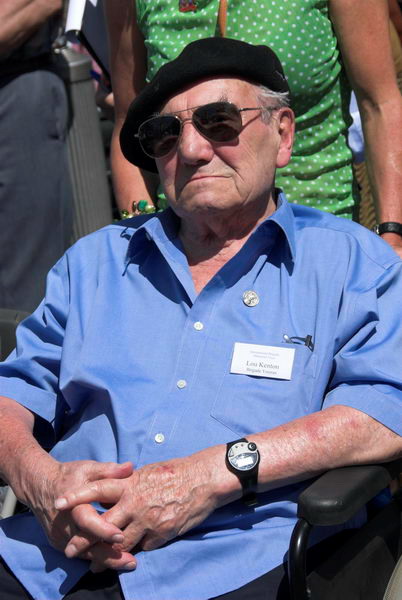
There was certainly more media interest than on previous occasions, in part because of the attendance of the Spanish Ambassador and his wife, reflecting the increasing interest from Spain; he also gave a brief speech. As was pointed out, it would have been nice to have a representative of the UK government also present.

As usual, the event concluded with the singing of the ‘Internationale’.
More pictures on My London Diary
Shut Guantanamo now!
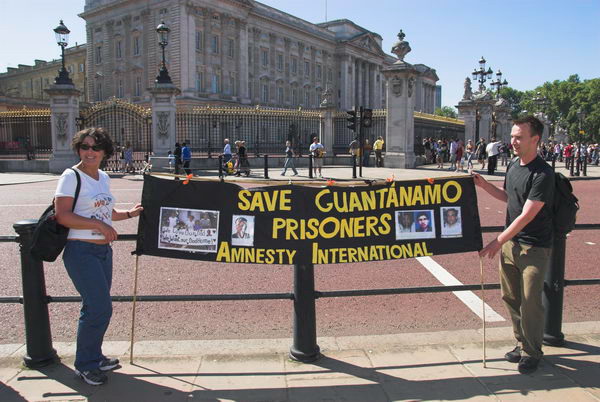
The National Guantanamo Coalition had called for a national demonstration in London to protest the deaths of three Guantanamo detainees earlier in the month.
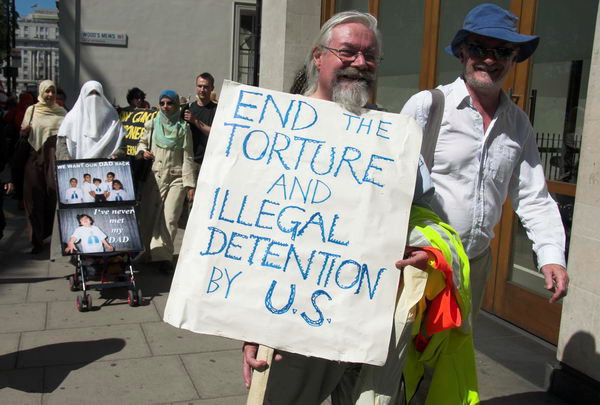
A group of protesters, mainly from the ‘Save Omar Deghayes’ campaign, but also representing other organisations, walked across London from Marble Arch to the new Home Office building in Marsham Street to hand in the petition calling for an independent enquiry into the three recent deaths at Guantanamo. The petition also calls for the immediate sending of all detainees to countries where their basic human rights would not be abused, an immediate closure of Guantanamo and other prisons where those held were denied proper legal process and for proper access to detainees by family and medical personnel.
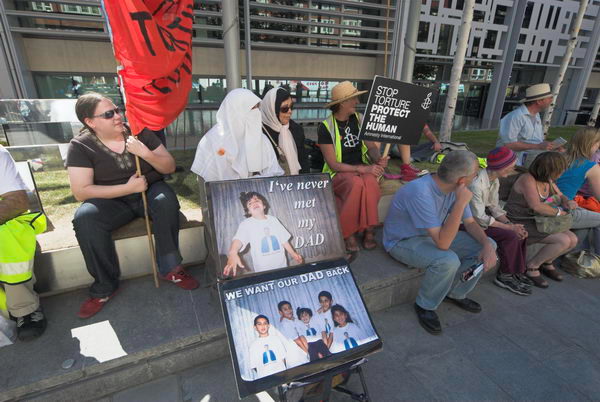
It was a long, hot and dusty trek across London, particularly tricky for those with pushchairs as we navigated the Hyde Park subways, and we were all glad to arrive (thanks to helpful directions from the police) at the Home Office. The front of the building was like an oasis, shade, green grass, water and trees.

The police did make us get off the grass and also made some effort to stop the display of placards and banners, but most of these remained visible. They had also attracted some attention from the crowds around Buckingham Palace as we passed by.
more pictures
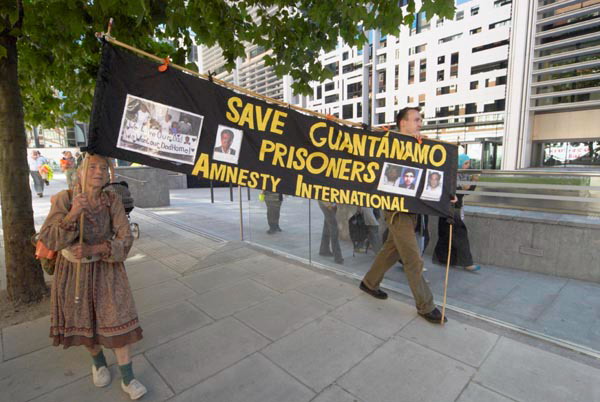
Flickr – Facebook – My London Diary – Hull Photos – Lea Valley – Paris
London’s Industrial Heritage – London Photos
All photographs on this page are copyright © Peter Marshall.
Contact me to buy prints or licence to reproduce.
